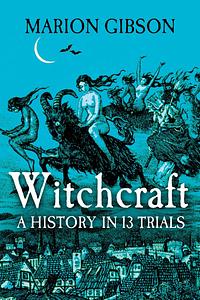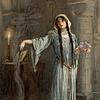Take a photo of a barcode or cover
challenging
dark
informative
sad
tense
medium-paced
⭐️⭐️⭐️✨ 3.5 Stars – A Fascinating Topic That Didn’t Fully Pull Me In
Witchcraft is full of intriguing stories and surprising historical accounts, and it’s clear that Marion Gibson knows her subject inside and out. There’s a lot to admire in how the book weaves together different cultures, time periods, and figures to show the broader impact of witchcraft accusations and beliefs.
That said, even with my genuine interest in the topic, I found myself drifting now and then. Some parts really grabbed my attention—especially when Gibson focused on specific individuals or lesser-known cases—but others felt harder to connect with. It felt more like I was absorbing facts than being pulled into a narrative.
This book will definitely appeal to readers who love digging into the roots of history and belief systems, but for me, it was more of a “read a chapter here and there” kind of experience rather than something I devoured cover to cover.
DNF 45%
This book was just way too boring: it was this weird combination of boring irrelevant information that would take us on little tangents of history, to feeling like it was fiction because of the writing style. There’s just got to be more interesting books out there on this topic. Even though I’m deeply fascinated with this topic I REALLY REALLY had to push myself to even read it.
This book was just way too boring: it was this weird combination of boring irrelevant information that would take us on little tangents of history, to feeling like it was fiction because of the writing style. There’s just got to be more interesting books out there on this topic. Even though I’m deeply fascinated with this topic I REALLY REALLY had to push myself to even read it.
informative
slow-paced
The overall claim about the gendered nature of witchcraft is thoroughly explored through 13 case studies, with the role of social ostracization in accusations becoming more apparent in part 2 of the book. The storytelling-like writing style, prominent throughout, however, at times impedes the analysis, ironically pulling the reader out of the fantastical retelling of the case studies. This is most notably emphasized when the author interrupts her own questions to make a joke, effectively brushing off all of their critical questions about the gaps in archives or how much can be assumed about the accused witches, if anything at all. Furthermore, while archives and other related sources are provided in the notes, most of the book consists of flowery descriptions that paint pictures without enough evidence to support credibility, calling into question just how much of these case stories are the archives' voice, the author's voice, and their imagination's voice. Ultimately, the book does its most basic job of demonstrating the gendered nature of witches, but fails to go beyond the initial observation for most of the book. Even when acknowledging the political-economic motivations of witch accusations, the author fails to comprehensively dissect the intersectionality of the gendered and political-economic interpretation of witches.
challenging
dark
informative
medium-paced
A fantastic exploration of witchcraft across the world and over the centuries. Incredibly well researched with fascinating case studies, this is a must-read.
I've seen some reviews labelling the writing style as stiff and boring. Utter bollocks imo. Gibson handled these stories sensitively and not at all clinically. I found them engaging and compelling, delivered in a style thats digestible and only lightly academic.
I think people expect the kind of sensationalist drivel they would get in a tabloid, but that would do the subjects of each trial an utter disservice. These were real people, real victims who were tortured and murdered and deserve our respect.
I've seen some reviews labelling the writing style as stiff and boring. Utter bollocks imo. Gibson handled these stories sensitively and not at all clinically. I found them engaging and compelling, delivered in a style thats digestible and only lightly academic.
I think people expect the kind of sensationalist drivel they would get in a tabloid, but that would do the subjects of each trial an utter disservice. These were real people, real victims who were tortured and murdered and deserve our respect.
challenging
dark
informative
inspiring
reflective
sad
slow-paced
dark
informative
medium-paced
Ran out of time! I’ll check it out from the library again!
informative
medium-paced
dark
informative
tense
medium-paced
challenging
informative
reflective
sad
medium-paced
an interesting and accessible history of witchcraft across continents. this is largely focused on europe and north america, although in the later parts is looks at some african case studies, and at points this becomes too narrative. it’s split into three parts; the first being trials at the height of the witch craze, the second being trials in the 19th and 20th centuries, looking at how accusations of witchcraft shifted, and the final part looking at 21st century examples. i would’ve preferred for the second and third parts to be longer, but the points the author wanted to make were nonetheless made relatively well. she encourages us to think about who is being accused of witchcraft, and the legacy of being a witch - to exist outside of power structures, often with illogical and nonsensical evidence levelled at them. in an era of amber heard and blake lively, where me too seems to have collapsed, the central thesis is a worthy one to draw attention to - how are these women being targeted, and why?





